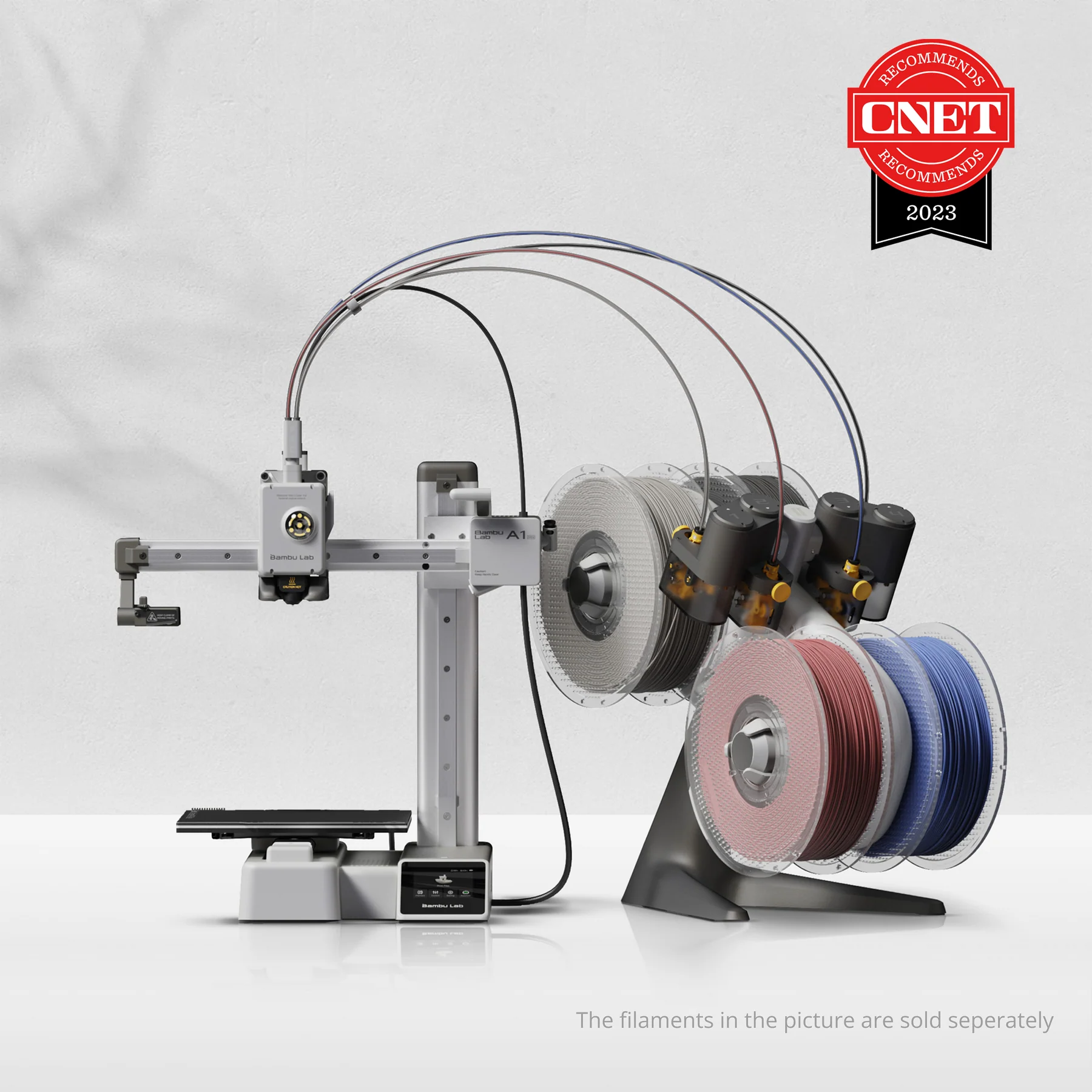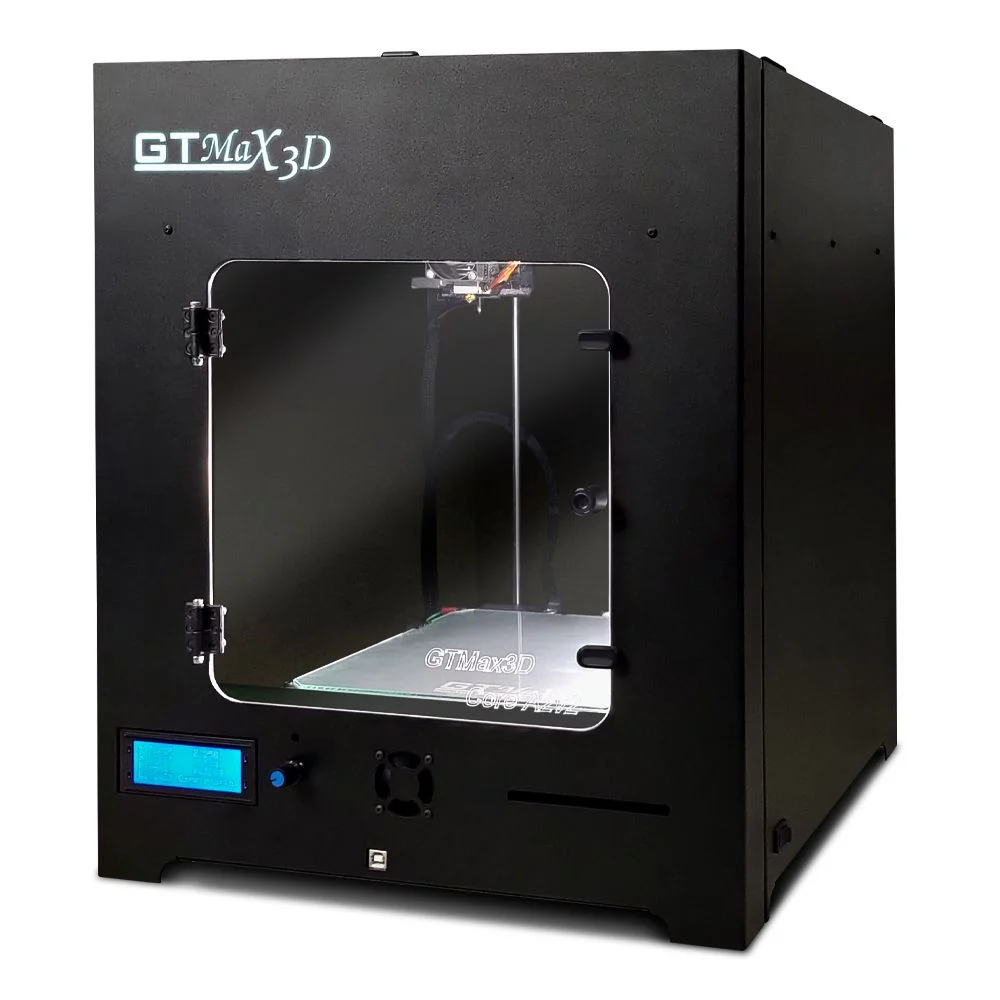Compare A1 Mini vs Core A2V2
Comparison between the best 3D printers
Choose the best 3D printer at the best price. The cheapest 3D printers are here.
Buy a 3D printer here with 3D Fila.
 |
 |
|
| Model | A1 Mini |
Core A2V2 |
| Printing Material | Filament | Filament |
| Buy Filament for Bambu Lab A1 Mini | Buy Filament forGTMax Core A2V2 | |
| Estimated price | $549,00 | $684,00 |
| Manufacturer | Bambu Lab | GTMax |
| Release Year | 2023 | 2019 |
| Print Volume [mm] | 180x180x180 | 220x220x240 |
| Printer Size [mm] | 315x347x365 | 425x460x512 |
| Weight [kg] | 5,5 | |
| Power Loss Recovery | YES | YES |
| Enclosed printer | NO | YES |
| Bed Leveling | Automatic | |
| Filament End Sensor | YES | YES |
| Bed type | Heated | Heated |
| Power supply system | Direct Drive | Bowden |
| Standard nozzle | 0,4 | 0,4 |
| Maximum Nozzle Temperature [°C] | 300 | 295 |
| Maximum Bed Temperature [°C] | 80 | 135 |
| Maximum printing speed [mm/s] | 500 | 150 |
| Filament holder | YES | YES |
| Camera for supervision | YES | YES |
| Recommended filaments | PLA, PETG, TPU, PVA | PLA, PETG, Tritan, Flex, ABS |
| Recommended slicers | Bambu Studio, Super Slicer, Cura, Prusa Slicer, Orca | Cura, Simplify, Slic3r, IdeaMaker |
| Maximum Resolution [mm] | 0,1 | 0,05 |
| Processor | 32-bit Silenciosa | |
| Display | Touchscreen 2,4'' | Mono |
| Power Supply | 150 W | |
| Connectivity | Wifi, Bambu bus, Cartão SD | SD / USB |
| Operating systems | Windows, Linux, Macbook | Windows, Mac, Linux |
| Date of registration in the system | 2024-04-10 | 2022-11-12 |
| Release date | 2023 | 2019 |
| Extra features | The Bambu Lab A1 Mini stands out not only for its impressive speed and automatic calibration, but also for its multi-color printing capability thanks to AMS Lite. This innovative system makes multi-color printing easy, making it accessible to everyone. AMS Lite, specific to the A1 Mini, supports up to four different materials simultaneously, providing creative freedom without complications. With comprehensive sensors for energy monitoring and recovery, a camera for timelapses and Wi-Fi control, the A1 Mini and AMS Lite together offer an intuitive and advanced 3D printing experience, ideal for materials such as PLA, PETG and TPU, and designed for simplicity and fast maintenance with quick-change nozzles. | The GTMax3D ProCore A2v2 is a compact and robust 3D printer with a printing area of ??220 x 220 x 240 mm. It offers high print quality, ranging from 0.05 mm to 0.32 mm. Its features include automatic filament detection and changing, travel speed of up to 300 mm/s, and a heated aluminum bed with a glass top. It has automatic bed leveling with 16 points and an all-metal hotend that reaches up to 298°C. The printer has a carbon steel frame with electrostatic painting, is automatic bivolt and has connectivity via USB and SD card. The Bowden system and core xy kinematics complete its advanced features. |
| Support for multiple colors and materials (AMS and CFS) | YES | NO |
Notes * |
||
| Cost-benefit | 7 / 10 | 6 / 10 |
| Hardware | 4.2 / 10 | 2.5 / 10 |
| Tela | . | . |
| Print volume | 3 / 10 | 3 / 10 |
| Performance | 4 / 10 | 1 / 10 |
Conclusion |
| In comparing the Bambu Lab A1 Mini and the GTMax Core A2V2 3D printers, several key differences emerge that can guide potential buyers in making a decision. The Bambu Lab A1 Mini, released in 2023, offers a more advanced set of features, including impressive printing speeds, easy multi-color printing capabilities, and automatic bed leveling. Its compact size and lightweight design also make it suitable for users with limited space. It excels in terms of cost-benefit ratio, scoring higher in performance and user-friendliness, making it ideal for beginners and hobbyists. The innovative AMS Lite system allows for a seamless multi-material print experience that enhances creative possibilities. On the other hand, the GTMax Core A2V2, though released in 2019, presents a reliable option with a larger print volume and robust construction. Its features, like automatic filament detection and high-resolution printing, are commendable; however, it lacks the same speed and advanced functionalities as the A1 Mini. While it has the advantage of an enclosed design, which may appeal to users looking for safety or improved thermal regulation, it falls short in overall performance and ease of use, particularly for those who may be new to 3D printing. Ultimately, if your priority is high-speed printing, versatility, and ease of access to features at a better cost, the Bambu Lab A1 Mini emerges as the more compelling choice. Conversely, if a larger build volume and a sturdy design are more important considerations—particularly for users experienced in 3D printing—the GTMax Core A2V2 remains a valid option. Given these considerations, the Bambu Lab A1 Mini stands out as the better investment for most users seeking an efficient and user-friendly 3D printing experience. |

